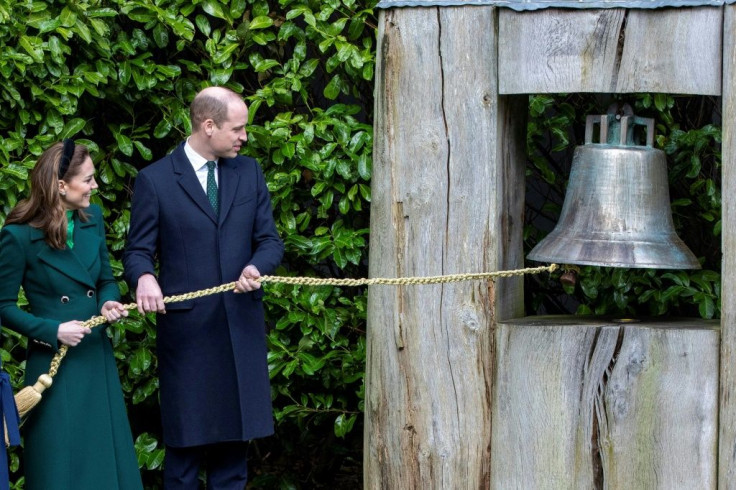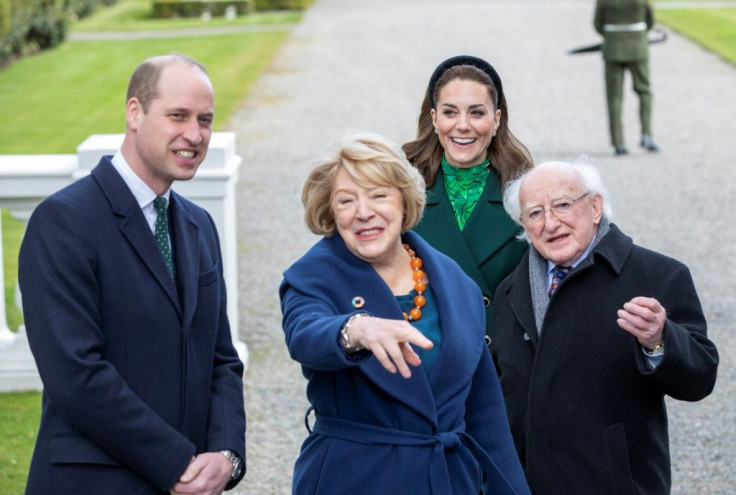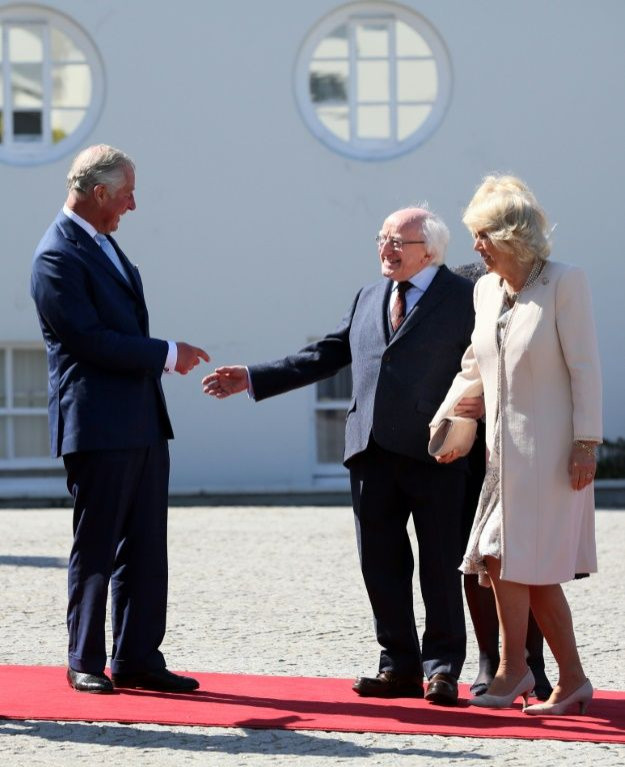Prince William And Kate Kick Off Three-day Irish Tour

Prince William and his wife Kate began a tour of Ireland on Tuesday, in the latest high-profile trip by senior British royals since Queen Elizabeth II's landmark state visit in 2011.
The couple's three-day trip comes just weeks after a general election which saw a surge in support for nationalists Sinn Fein, whose flagship policy is Irish reunification.
William's grandmother the queen is head of state in Northern Ireland. Sinn Fein was the political wing of the Irish Republican Army (IRA), which fought against British rule in the province for decades.
The visit also comes in the wake of Britain's departure from the European Union on January 31, with the border between Northern Ireland and the Irish republic a major issue in the process.
William and Kate met Irish President Michael D. Higgins at his official residence after landing in Dublin.
The royal couple rang the Peace Bell, housed in the gardens of the residence, which was unveiled in 2008 to mark the 10th anniversary of the Good Friday Agreement.
The accord ended three decades of violence in Northern Ireland known as "The Troubles".

They also visited the city's Garden of Remembrance, which commemorates those who died fighting for Irish independence -- mostly at the hands of the British.
The Duke and Duchess of Cambridge left a message on a wreath which read: "May we never forget the lessons of history as we continue to build a brighter future together."
William and Kate then met interim Irish Prime Minister Leo Varadkar, who resigned following a stinging election defeat last month that saw his Fine Gael party slump to third place.

The royal visit -- the couple's first to Ireland -- was made at the request of Britain's Foreign Office to "highlight the many strong links between the UK and Ireland," Kensington Palace said.
The whole island of Ireland was under British rule until a bloody war for independence between crown forces and Irish republicans ended in 1921.

A treaty split the territory between a British-run Northern Ireland and a "free state" which went on to become the modern Irish republic.
Sectarian violence between pro-British unionists and republicans wanting union with Ireland flared in Northern Ireland in the 1960s, leaving more than 3,000 dead on all sides.
Royal visits were impossible because of the terror threat. In 1979, the IRA assassinated William's great-great uncle Louis Mountbatten, the last viceroy of British-ruled India.
The IRA began to lay down its arms in 1997 as part of the peace accord, and pledged to campaign for unification non-violently.
That allowed the queen to make a state visit in 2011, which was the first by a British monarch in what is now the Republic of Ireland since her grandfather king George V a century earlier.
It was hailed as a pivotal moment in healing historic unease between the two deeply-entwined nations.
Heir to the throne Prince Charles and his wife, Camilla, have made five visits to Ireland in the last five years in a sign of closer Anglo-Irish relations.
During their time there, William and Kate will also travel to two counties near Dublin and to Galway, on the country's west coast, which is European Capital of Culture in 2020.
The trip comes at a unique time in Irish politics after Sinn Fein became the second-largest party in elections last month.
None of the parties in Ireland won enough seats to form a majority government, and inter-party negotiations have stalled.
But Sinn Fein leader Mary Lou McDonald has said she "may well be the next taoiseach (prime minister)".
If that happens, it would likely rekindle a constitutional battle over Northern Ireland as Sinn Fein wants a referendum on Irish unification to be held within five years.
A separate border poll in Northern Ireland would also be required for it to happen, according to the terms of the 1998 peace accord.
© Copyright AFP 2024. All rights reserved.





















